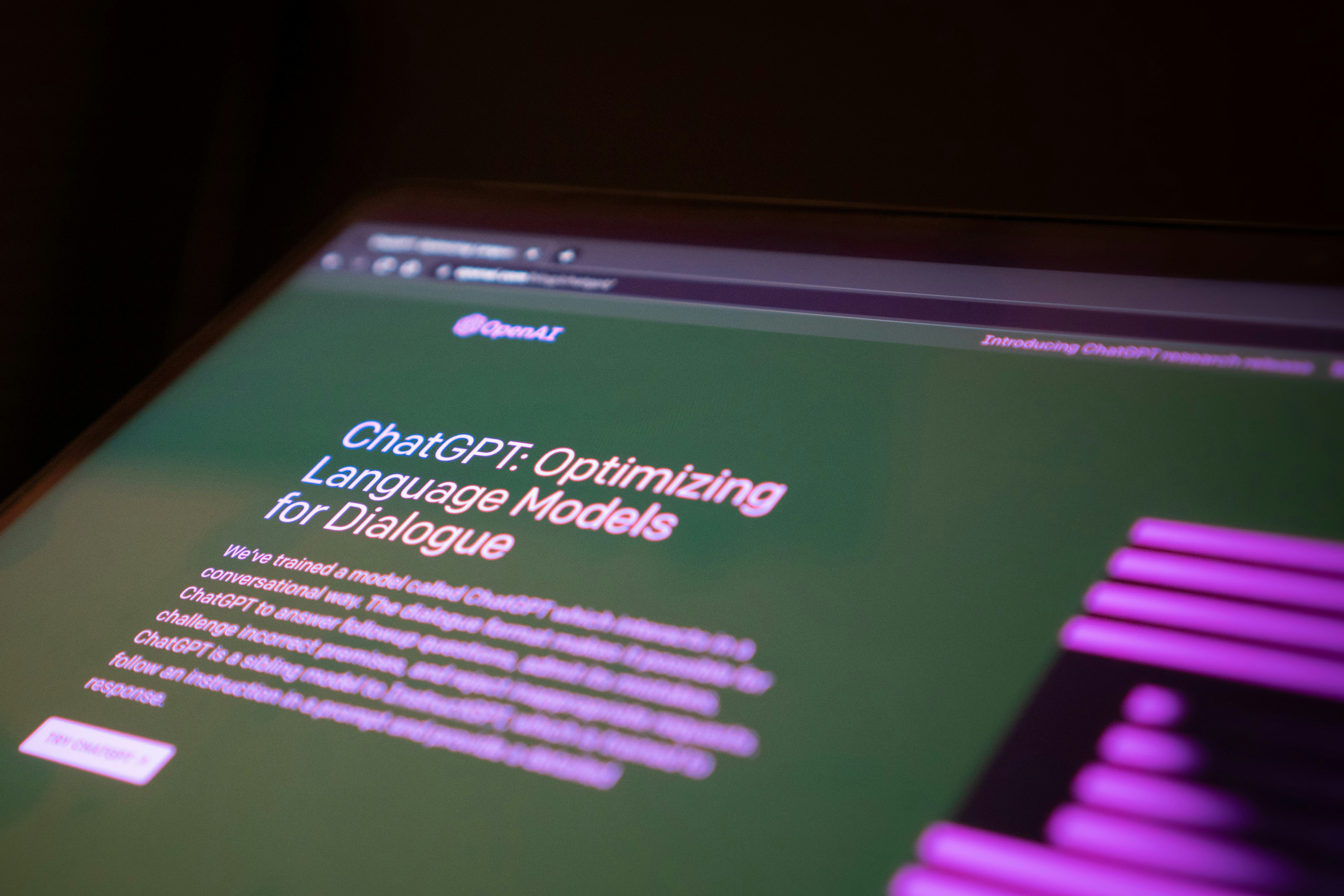Introduction to Federated Learning
Federated learning represents a paradigm shift in the approach to training artificial intelligence (AI) models, emphasizing the preservation of user privacy while enabling collaborative learning. Unlike traditional machine learning methods that typically require central data storage, federated learning empowers decentralized devices to collaborate in training models without necessitating the transfer of sensitive data to a central server. This innovative approach allows for the development of robust machine learning models while ensuring that users’ personal data remains confidential and secure.
The fundamental concept behind federated learning lies in the collective training of models across multiple devices, such as smartphones, tablets, or IoT devices, which each hold their own local data. During the training process, rather than sending raw data to a central server, devices compute updates based on their local datasets and only share these updates, or model weights, with the central server. The server then aggregates these updates to enhance the global model, which is subsequently shared back with the devices. This cycle repeats, allowing for continuous improvement of the model while maintaining data privacy.
The significance of federated learning is particularly pronounced in scenarios where data sensitivity is of utmost concern, such as in healthcare, finance, and personal communication. By enabling AI systems to learn from vast amounts of decentralized data without compromising privacy, federated learning paves the way for responsible AI. Furthermore, it addresses regulatory requirements concerning data protection, as it minimizes the risk of data breaches inherent in traditional centralized systems. As a result, federated learning not only supports the advancement of AI technologies but also fosters trust among users who are increasingly aware of the implications of data privacy.
How Federated Learning Works
Federated learning represents a transformative approach to artificial intelligence training, enhancing privacy and collaboration. At its core, this method operates through a client-server architecture, where the server coordinates the model training while individual clients, typically user devices, perform local computations. This decentralized framework allows the model to be trained on data that remains on the user devices, significantly mitigating privacy risks associated with sending raw data to a central location.
The process begins with a shared model initialized on the server, which then sends this model to participating clients. Each client, utilizing their local dataset, performs a series of training iterations. This training takes place entirely on the client’s device, allowing for the utilization of data without compromising individual privacy. The key component in this process is the federated averaging algorithm. As each client completes its training, it generates updated model parameters, which reflect its local dataset’s insights.
Once the updates are computed, the clients return these model parameters to the server, where an aggregation process occurs. The server employs the federated averaging algorithm to combine the updates from all participating clients, effectively improving the central model while preserving individual contributions. This aggregated model retains benefits derived from diverse datasets without any specific data ever being transmitted. The result is a collaborative learning environment where different clients can indirectly enhance each other’s models, as updates are pooled together without revealing sensitive information.
This iterative training process continues throughout multiple rounds, refining the model further with each cycle. By maintaining a circular flow of updates between the server and clients, federated learning enables robust model improvements while ensuring data privacy, demonstrating a progressive shift in how artificial intelligence can be developed in a collaborative yet secure manner.
Benefits of Federated Learning
Federated learning (FL) is rapidly gaining traction within the artificial intelligence (AI) community due to its myriad advantages, particularly in the domains of data privacy and efficient resource utilization. One of the most prominent benefits of adopting federated learning frameworks is the enhancement of data privacy. In traditional models, sensitive information is often collected and centralized, heightening the risk of data breaches. Conversely, federated learning allows models to be trained on decentralized data residing on users’ devices, ensuring that personal information never leaves the local environment. This approach fundamentally aligns with privacy-preserving principles and regulations such as GDPR.
Another significant benefit is the reduction of bandwidth costs associated with data transmission. When using federated learning, only model updates are shared with a central server rather than entire datasets. This not only minimizes the volume of data transfer but also reduces the associated costs, thereby improving operational efficiency, particularly in scenarios involving large-scale data.
In addition to these factors, federated learning enhances the capacity for improved personalization in AI applications. Since the models are trained on diverse datasets across multiple devices, they can tailor responses and predictions more effectively to individual user behavior and preferences. This increased personalization leads to more accurate models that resonate with the unique characteristics of users, creating a better user experience.
Furthermore, federated learning effectively leverages edge devices for computation. By utilizing the processing power of local devices, federated learning circumvents the need for extensive central infrastructure, which can be costly and constraining. Utilizing edge devices for computation not only facilitates faster model training but also makes it feasible in environments with sporadic internet connectivity.
Through the combination of enhanced data privacy, reduced bandwidth costs, improved personalization, and effective utilization of edge computing, federated learning emerges as a compelling approach for contemporary AI applications, driving innovation while prioritizing user security.
Applications of Federated Learning
Federated learning is increasingly becoming a pivotal technology across various sectors, with its ability to facilitate collaborative training of artificial intelligence models while prioritizing data privacy. In healthcare, for instance, federated learning is utilized to gather insights from sensitive patient data stored at different hospitals without transferring that data to a central server. This approach allows researchers to train predictive models for disease prognosis while ensuring patient confidentiality. By aggregating learning from various locations, healthcare providers can enhance outcomes while safeguarding stringent privacy regulations.
Another significant application of federated learning is observed in the finance sector. Financial institutions are often burdened by the challenges of complying with regulations that dictate stringent data privacy standards. Through federated learning, banks can collaborate to create risk assessment models using transaction data without exposing any individual customer’s information. This collaborative approach not only boosts the model’s predictive accuracy but also reinforces data security protocols, thereby maintaining consumer trust.
In the realm of mobile device personalization, federated learning is employed to tailor applications to individual user preferences. For example, smartphone manufacturers can utilize federated learning algorithms to adjust recommendations and application functionalities based on user behavior, all while ensuring that sensitive data remains on the device. This provides a personalized user experience without compromising privacy.
Additionally, autonomous systems including self-driving cars benefit from federated learning as well. By enabling vehicles from different locations to share their learnings, these systems can enhance safety and functionality without exchanging sensitive operational data. This not only accelerates the development of robust autonomous driving models but also addresses privacy concerns at the same time.
Through these diverse implementations, federated learning demonstrates its versatility and capability to address complex challenges across various industries while prioritizing the crucial aspect of privacy.
Challenges and Limitations
Federated learning, while offering significant advantages in terms of privacy preservation and collaborative model training, presents various challenges that researchers and practitioners must address. One of the foremost challenges is communication efficiency. In federated learning, models are trained across decentralized devices, which often have variable connectivity and bandwidth capabilities. Frequent exchange of model updates can lead to considerable overhead, particularly in scenarios involving a large number of devices or when the training data is extensive. This necessitates the need for optimizing communication protocols to minimize latency and improve overall efficiency.
Another critical aspect to consider is model convergence. In federated learning, the aggregation of updates from diverse devices can result in heterogeneous training dynamics, complicating the convergence of the model. The varying data distributions at different devices, known as non-IID data, can adversely affect the model’s ability to learn effectively. Researchers must develop robust algorithms capable of ensuring convergence despite these disparities, which is a significant area of investigation in the field.
System heterogeneity presents another prominent challenge. Different devices often exhibit varying computational powers, memory capacities, and energy limitations. This discrepancy can hinder the training process, as slower devices may take longer to compute updates, creating an imbalance that affects the overall efficiency of the federated learning system. Strategies for addressing this issue include adaptive resource allocation and prioritizing updates based on device capabilities.
Lastly, potential biases in training data pose a considerable risk in federated learning. If the data collected at individual devices are biased or unrepresentative, the resulting model may exhibit skewed performance metrics. Ensuring data diversity and implementing techniques to minimize bias in the updates is crucial for developing fair and equitable federated models. Addressing these challenges is essential for the successful implementation and scalability of federated learning systems.
Comparison with Centralized Learning
Federated learning and centralized learning represent two distinct paradigms in the realm of artificial intelligence (AI) and machine learning. In centralized learning, data is gathered from multiple sources and consolidated into a single, centralized server for processing and model training. This approach relies heavily on data aggregation, which can result in improved accuracy and efficiency in model performance. However, this method poses significant challenges, particularly concerning data privacy and security. The central repository becomes an attractive target for data breaches, raising significant ethical concerns regarding user information.
On the other hand, federated learning offers a more decentralized approach, wherein model training occurs locally on individual devices without the need to transfer raw data to a central server. Each participant trains the model on their local dataset and shares only model updates—such as gradients or weights—with the central server. This process not only enhances data privacy but also complies with legal regulations like GDPR, as user data remains on their devices throughout the training process.
When contemplating infrastructure requirements, centralized learning necessitates robust server capabilities and substantial bandwidth to accommodate large volumes of data transfer. Conversely, federated learning is designed to be more resource-efficient, utilizing edge computing principles to leverage the processing power of individual devices. As a result, federated learning can be significantly more adaptable to situations with limited connectivity or varying device capabilities.
Scalability is another critical point of differentiation. Centralized systems can become overwhelmed as the volume of data and number of participants grow, leading to performance bottlenecks. In contrast, federated learning scales more effectively because it inherently distributes the training workload across numerous devices, allowing for seamless integration of new participants without overloading any single point in the system.
Future Directions of Federated Learning
As federated learning continues to evolve, several future directions appear promising, indicating substantial opportunities for research and development. One notable trend is the potential integration of federated learning with blockchain technology. By leveraging blockchain’s decentralized and secure nature, the management of federated learning models could be enhanced. This integration may allow for more robust systems where data ownership, as well as the contributions of various nodes, are securely validated and tracked, further preserving the privacy of individual data sources while promoting collaborative AI training.
In addition to blockchain, advancements in differential privacy techniques are likely to play a crucial role in shaping the future of federated learning. These techniques can reinforce privacy measures by adding controlled noise to the data, ensuring that sensitive information remains confidential during the training process. The continuous refinement of these methods will not only improve the effectiveness of federated learning models but will also build greater trust among participants, encouraging wider adoption across sectors that handle sensitive information such as healthcare and finance.
Moreover, increased collaboration across industries is expected to drive further innovations within the domain of federated learning. As organizations recognize the collective benefits of pooling resources and expertise, cross-industry partnerships may emerge, creating comprehensive federated learning ecosystems. Such collaborations could lead to more sophisticated algorithms and applications, addressing complex challenges while respecting data privacy regulations. The interplay between academia and industry will also be vital, fueling research initiatives focused on enhancing federated learning methodologies.
Overall, the future of federated learning appears to be bright, with myriad opportunities for enhancement through emerging technologies and collaborative efforts. These developments not only promise improved performance and functionality but also underscore a commitment to privacy preservation in AI training practices.
Ethical Considerations in Federated Learning
The implementation of federated learning presents a unique array of ethical considerations that demand attention and scrutiny. At the forefront is the issue of data ownership. As federated learning operates on the principle of decentralized data processing, the concept of who owns the data becomes murky. Users often generate data on their devices, and the question arises: how can organizations ensure that they respect the users’ rights to their own data while leveraging it for technological advancements? Addressing this issue is crucial for maintaining trust and fostering a collaborative environment in AI training.
User consent is another pivotal element in the ethical landscape of federated learning. Prior to the utilization of individual data for model training, clear and informed consent must be obtained from users. This necessitates a comprehensive understanding of how their data will be used, the potential risks involved, and the benefits that accrue from this collaborative AI effort. Transparent communication can empower users to make informed decisions regarding their participation and instill a sense of agency over their personal information.
Transparency in AI decision-making must also be a priority. It is vital for organizations to provide stakeholders with insights into how federated learning models arrive at particular conclusions or recommendations. This transparency ensures accountability and facilitates a broader dialogue about the implications of AI. Users should have access to information that demystifies model predictions and elucidates the rationale behind significant decisions, as this understanding can mitigate fears related to bias or discrimination in AI systems.
Lastly, the responsibility that accompanies deploying federated learning must not be overlooked. Developers and organizations must cultivate a culture of ethical responsibility in their AI practices. The societal impacts of these technologies extend far beyond individual use cases, influencing public perception and understanding of AI on a larger scale. Adequate training, rigorous assessment, and a commitment to ethical standards are essential components of accountable AI deployment within the federated learning framework.
Conclusion
In reflecting upon the significance of federated learning within the realm of artificial intelligence, it is evident that this innovative approach represents a fundamental shift in the way AI systems are developed and trained. By decentralizing the training process and allowing data to remain on local devices, federated learning not only addresses pressing privacy concerns but also fosters a collaborative environment that enhances the model’s performance. This method leverages the power of diverse data sets from multiple sources, which is particularly beneficial in ensuring that AI models are robust and generalizable across different scenarios.
The advantages of federated learning extend beyond mere data privacy; they encompass improved personalization and efficiency in training. By harnessing local data while simultaneously minimizing the transmission of sensitive information, federated learning aligns with increasing regulatory demands for data protection, thereby encouraging broader acceptance of AI technologies across various sectors. Furthermore, this collaborative paradigm emphasizes the active involvement of users, transforming them from passive data providers into dynamic participants in the learning process.
As we look to the future, the implications of privacy-preserving technologies like federated learning are profound. The potential applications range from healthcare to finance, as organizations seek to develop AI systems that safeguard individual privacy without sacrificing the quality of predictions and insights. It is imperative for stakeholders, including policymakers, businesses, and researchers, to recognize the importance of collaborative approaches in the advancement of AI technologies. Embracing federated learning will not only enhance the capabilities of AI systems but also build trust among users, ensuring that privacy is maintained as a core principle in technological innovations.



